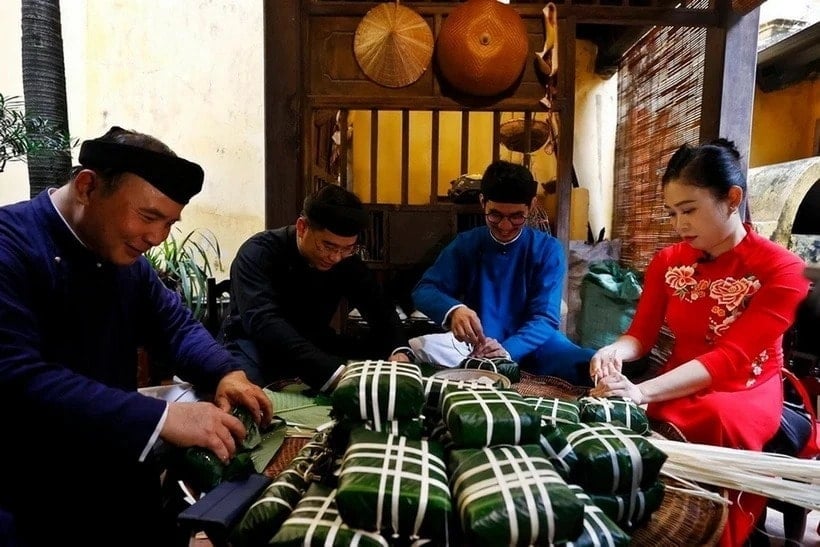
For every Vietnamese person around the world , the traditional Tet holiday always has a very sacred meaning. It is an occasion for all family members to reunite, put aside all worries and busyness, and gather around the Tet meal. And on that reunion meal, there certainly cannot be a lack of traditional cakes from many generations.
In each region of the country there is a different type of cake, not only beautiful, delicious but also meaningful.
Chung cake
Banh Chung has a long history and a special place in the minds of Vietnamese people. Banh Chung is not simply a dish, but the origin, the culture, the synthesis of heaven, earth with the quintessence that nature bestows on Vietnamese people. Perhaps that is why people remember Banh Chung as they remember Tet and remember Tet is to remember the cake of their ancestors.
Banh chung symbolizes the ancient Vietnamese concept of the universe and gathers the quintessence of Vietnam in a simple, familiar dish. According to the legend of banh chung and banh day, banh chung is square, wrapped in green dong leaves, symbolizing the ever-green and fertile land with the long-standing rice culture of the Vietnamese people. Inside the cake is fragrant sticky rice, green bean filling and fatty pork belly marinated with spices and pepper.
After wrapping, banh chung is boiled for 10-12 hours, then taken out and steaming, cooled in the cool weather of the changing seasons, absorbing the flavors of heaven and earth and blending with the warm, happy atmosphere around the pot of banh chung of generations of northern families in the last days of the year.
During the Tet holidays, on the ancestral altar as well as the New Year's table of the Northern people, the image of green Chung cakes with fatty meat and pickled onions is indispensable. On the altar, seeing Chung cakes, everyone feels nostalgic as if seeing the hard work of their ancestors to grow rice grains, seeing the joy of Tet reunion, gathering and absorbing the simple quintessence of the Vietnamese soul every time Tet comes, Spring returns.
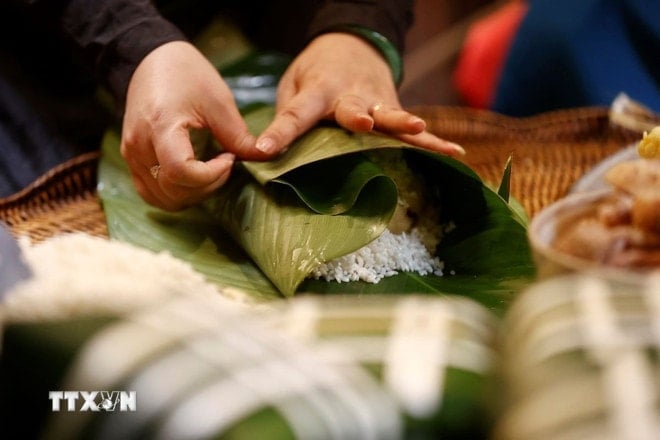
Wedding cake
Phu the cake is also a typical Tet cake of the Northern people, especially in Bac Ninh - Kinh Bac, the homeland of these golden sweet cakes. Every time Tet comes, people prepare delicious cakes together with the wish for a happy and prosperous life.
According to legend, the first phu the cakes were made about 1,000 years ago, in Dinh Bang ward, Tu Son city, Bac Ninh province. According to Dinh Bang ward people, phu the cakes (also known as xu xe cakes) originated from the Ly dynasty, when King Ly Anh Tong went to war, the queen at home missed her husband so much that she made cakes and sent them to the battlefield. The king ate the cakes and found them delicious and sweet, and cherished the love between husband and wife, so he named them phu the cakes.
But there is also a legend that, on one occasion when King Ly Thanh Tong and his queen visited the Do Temple festival, the people of Dinh Bang were eager to find local products to offer the king. A young couple in the village made cakes to offer the king. The king enjoyed them and found them delicious, so he named them Phu The cakes, or "Wife cakes, Husband cakes." Since then, Phu The cakes have symbolized loyalty and happiness in couples, so they are often used in weddings and Tet holidays.
To make a delicious Phu The cake, all steps must be carefully selected from sticky rice, green beans, banana leaves, dong leaves, and gardenia fruit. The cake crust is made from yellow sticky rice, ground into flour, mixed with white sugar, shredded green papaya, banana essential oil, vanilla, and gardenia fruit juice, and kneaded well. The bright yellow color of the cake crust is the color of the gardenia fruit juice. The cake filling is made from peeled green beans, steamed, mashed, and mixed with white sugar, coconut milk, and shredded coconut.
The dong and banana leaves must be washed and drained, then the stems must be removed so that when wrapping the cake, it will be soft. The inner leaves must be soft banana leaves that have been boiled and dried. When wrapping, the baker also spreads a layer of fat on the leaves so that when peeling the cake, it will not stick and will have a characteristic richness. After wrapping, the cakes are boiled and taken out and tied in pairs with a pink string with the meaning of praying for the couple's love to be forever warm and strong.
Every time Tet comes, Dinh Bang people are busy making cakes to prepare for their families, as well as to send to diners in provinces and cities across the country. The aroma and stickiness of the cake are emitted from the golden sticky rice, the toughness of papaya, combined with the richness of green beans, coconut, and the sweetness of sugar, creating a very unique flavor, combined with the golden color of the cake crust, all blending together to bring the Spring atmosphere to the ancestral altar, the family reunion dinner on Tet holiday of each family.
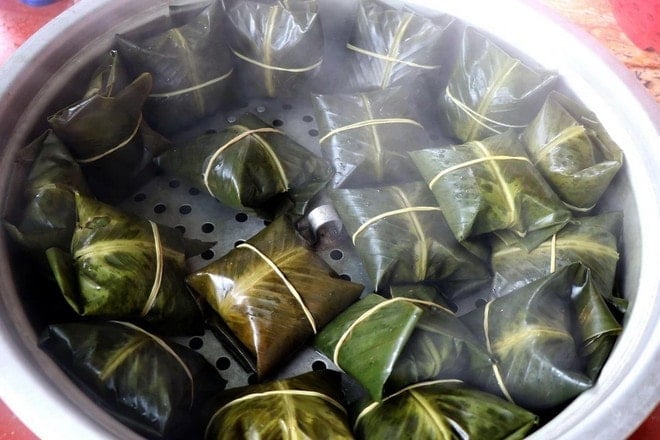
Green bean cake
This is a famous cake of Hai Duong . The cake is made from green beans, has a rich, sweet and fragrant taste. On Tet holiday, green bean cakes are contained in gold bar-shaped boxes, printed with flying dragons. Many people often buy green bean cakes as gifts to send to the homeowner wishes for wealth in the New Year.
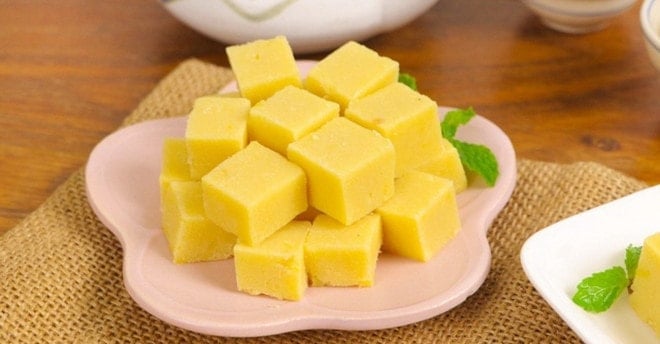
Cake
If the North has banh chung for Tet, then people in the Central region, especially in Hue, will eat banh in. Banh in is a local cake, originally made for kings and now an indispensable traditional cake.
The ingredients of the cake include sticky rice flour, tapioca flour, sugar and mung beans. In the past, this cake was made exclusively for kings, but today, Banh In is an indispensable traditional cake during Tet holiday of families in Hue. The cake is printed with many images such as dragons and phoenixes, the words Phuc, Tai, Loc, Tho... as a wish for a new year of happiness and good luck to everyone.
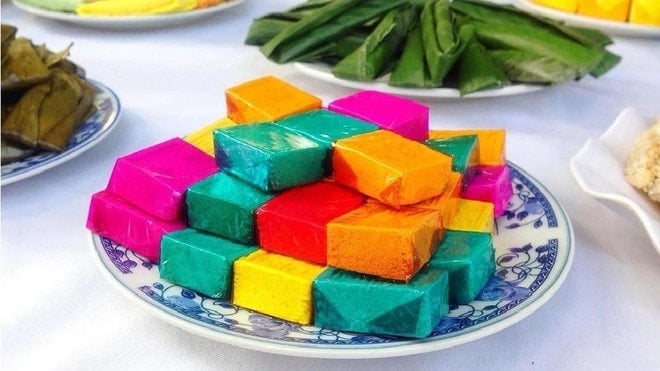
Banh it la gai
Just like people in the South eat Banh It during the 3 days of Tet, people in the Central region also eat Banh It, but it is Banh It wrapped in Gai leaves, a specialty of Binh Dinh.
According to folklore, this cake appeared during the Hung King period, created by the King's youngest daughter from Chung cake and Day cake. The cake is block-shaped, has a delicious, chewy taste, so anyone who has tasted it will find it hard to forget.
Banh it la gai is a specialty of Binh Dinh, shaped like a block, with a delicious, chewy taste. According to folklore, this cake appeared during the Hung King period.
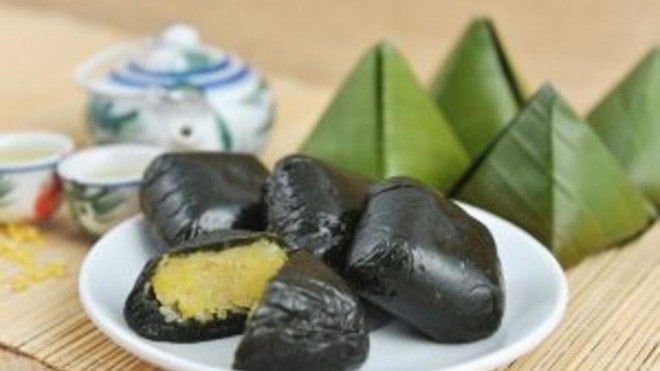
Cake
Central cuisine is extremely rich and diverse, each dish has its own unique characteristics. Central specialties from snacks, to traditional Tet dishes or desserts all have charm and sophistication in the way they are prepared, making it difficult for diners to ignore.
Whenever mentioning Quang delicacies, people immediately think of Quang noodles, grilled beef at Cau Mong bridge, Tam Ky chicken rice, Hoi An cao lau... And among the people, there are many folk songs about the specialties: "Nem cha Hoa Vang, Banh to Hoi An...". These are long-standing traditional dishes during every Tet holiday of the people of Quang. However, a delicious and attractive cake that cannot be absent from the ancestral altar during Tet is Banh to.
On the altar on New Year's Eve, not all dishes are offered. For savory dishes, people only choose a bowl of Quang noodles or a plate of sticky rice, and for cakes, banh to is indispensable.
Banh to is usually only available during Tet, it is harder to find on normal days. Banh to is dark brown like the color of soil, poured into a thick mold, square or round, which is the symbol of "round sky, square earth" in people's thinking.
The process of making Banh To is not simple, because it must ensure that the cake is soft, chewy and has a sweet taste. Therefore, the sticky rice flour must be selected from the famous Quang Nam sticky rice, and sugar and crushed ginger are added to extract the juice. The sticky rice flour and sugar are kneaded thoroughly, and a little ginger juice is added for fragrance. All are mixed together.
Clean the dried banana leaves or dong leaves and line them around the bamboo mold that has been previously woven into a basket, square or round, with a diameter of 10 to 15cm. Mix the sugar powder mixture until it becomes thick, then pour it into the mold and steam it.
After the cake is steamed, it is taken out. At this time, sesame seeds are sprinkled evenly on the surface of the cake, left for about 3-4 minutes to cool, then stored in a cool place. Those who are more careful will dry the cake in the sun until it dries. However, a delicious cake is one that is not too hard or too soft, and when cut, the dough does not stick to the knife. Quang Nam cake can be kept for a long time without fear of mold. In fact, the longer it is kept, the more flexible and chewy the cake becomes, and the richer the flavor. This also depends on the secret recipe of the person making the cake.
Nowadays, the market is flooded with many types of cakes with beautiful designs and quality, but Banh To still holds a very important position for the people of Quang. Banh To is not only a delicious dish but also carries a good traditional culture. Remembering Banh To is also remembering the origin of the village.
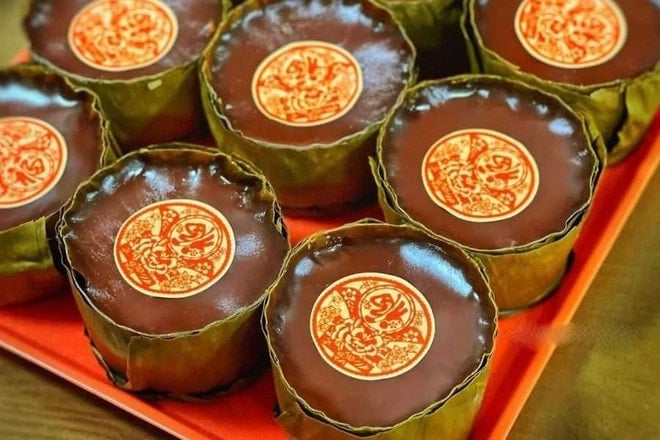
Banh tet
If banh chung originated from the reign of the 16th Hung King according to "The Legend of Banh Chung and Banh Day", then banh tet of the Southern people reminds us of the talented King Quang Trung. Initially, this cake was wrapped by the king for Tet and named banh tet. However, over the years, it was mispronounced as banh tet as it is today.
The main ingredients to make a banh tet are the same as banh chung in the North, which are sticky rice, green beans, and pork belly. However, banh tet has two differences from banh chung, which are that it is wrapped in banana leaves and has a long, round shape.
To have a delicious banh tet, it is necessary to be very meticulous, carefully from the steps of preparing ingredients such as sticky rice must be new, fragrant, delicious; green beans have been peeled, cooked; grated coconut to get coconut milk; pandan leaves are ground, filtered to get the water and mixed into the rice to soak to create a cool green color; pork belly is cut according to the length of the cake, marinated with spices to make the filling.
Boiling banh tet is similar to boiling banh chung, from the way the cakes are arranged in the pot, the boiling time to constantly watching the fire so that the cakes are cooked evenly, not undercooked or mushy.
The time to boil the cakes is always the most anticipated time, the whole family gathers together, the children are also eager to watch the pot of cakes, chatting with grandparents and parents with countless questions about the traditional Tet. Just like that, love mixed with the warmth of the fire spreads to every kitchen and every house. Year after year, Vietnamese children grow up like that.
After boiling, Banh Tet is cooled, cut into beautiful round slices to offer to ancestors and is also an indispensable dish on the New Year's Eve tray of Southern people./.
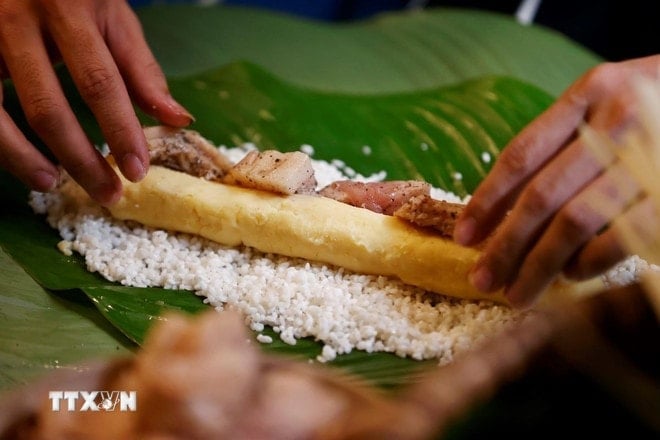
Source: https://baodaknong.vn/nhung-mon-banh-truyen-thong-doc-dao-trong-dip-tet-co-truyen-cua-ba-mien-241542.html



![[Photo] Readers line up to visit the photo exhibition and receive a special publication commemorating the 135th birthday of President Ho Chi Minh at Nhan Dan Newspaper](https://vphoto.vietnam.vn/thumb/1200x675/vietnam/resource/IMAGE/2025/5/17/85b3197fc6bd43e6a9ee4db15101005b)

![[Photo] Prime Minister Pham Minh Chinh chairs meeting on science and technology development](https://vphoto.vietnam.vn/thumb/1200x675/vietnam/resource/IMAGE/2025/5/17/ae80dd74c384439789b12013c738a045)
![[Photo] More than 17,000 candidates participate in the 2025 SPT Competency Assessment Test of Hanoi National University of Education](https://vphoto.vietnam.vn/thumb/1200x675/vietnam/resource/IMAGE/2025/5/17/e538d9a1636c407cbb211b314e6303fd)

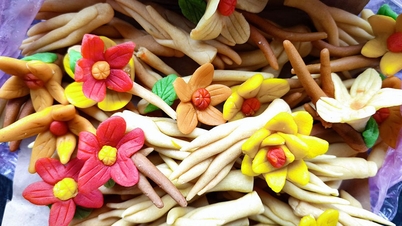

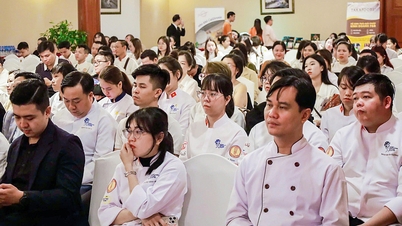

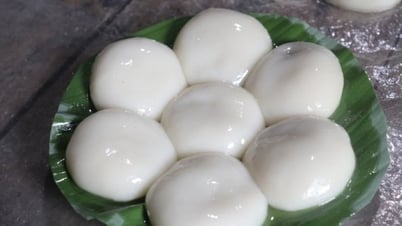




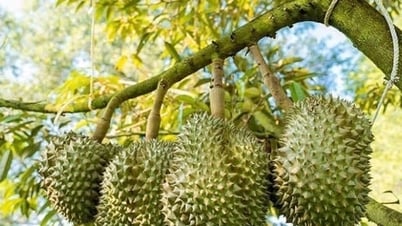

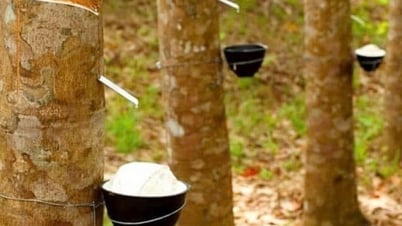







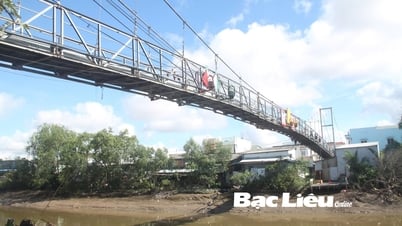
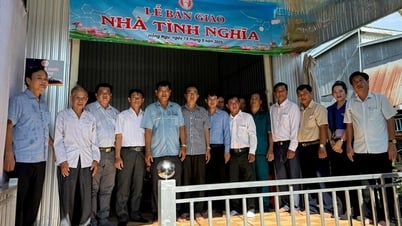


![[Photo] Nearly 3,000 students moved by stories about soldiers](https://vphoto.vietnam.vn/thumb/1200x675/vietnam/resource/IMAGE/2025/5/17/21da57c8241e42438b423eaa37215e0e)



















































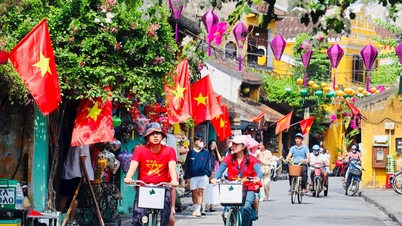




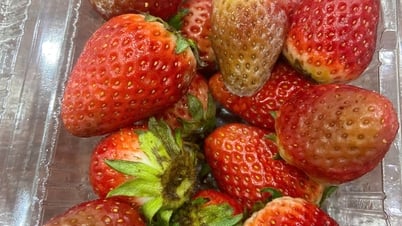

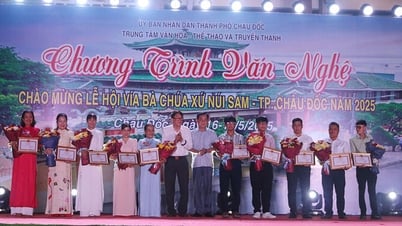








Comment (0)